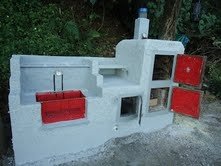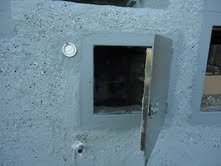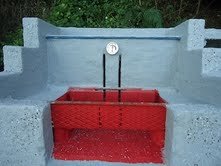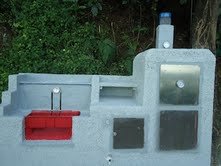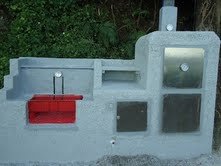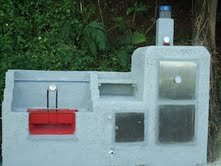Guamaque
Knows what a fatty is.
Hello, I built a custom BBQ pit myself awhile ago, and have since made some modifications. I posted some pics of the new mod, the old pit pics are on here somewhere about a year ago. My problem is I have problems keeping the temp up to my target temp, 250-275 in the cooking chamber. I converted my over under BBQ to an over under - offset BBQ. Probably the only one to have such a beast. The reason was, the over under was always too hot for low and slow. So I converted the storage chamber to the left as the pit, as I originally planned to do, but was too lazy to go through with it at the time. So before, I used an open draft system, had a fully open chimney and a draft air inlet control in the pit chamber. It worked ok, but ran too hot. So I converted the BBQ to an offset design. But, I also added a new pit temp controller, and it works fine. You can see the copper air intake tube, bottom left of the pit, that the blower attaches to. The problem is that in the top cooking chamber, on the right in the pic, it never gets to where I want it at 250. I have the control temp probe about 1 foot from the top of the chamber. I also have quality analog probes in place and they all agree. I would like to know if anyone has any ideas on how to improve this. Should the chimney be closed down with a damper when using a power draft to keep the heat in. Vs. an open draft where you want full flow out for heat and airflow in . . And with such a vertical pit, where do you think the best place to measure temp for the pit controller should be. It varies tremendously every 6 inches. I even have a analogue dial in the chimney which sometimes runs higher than the cooking chamber...

